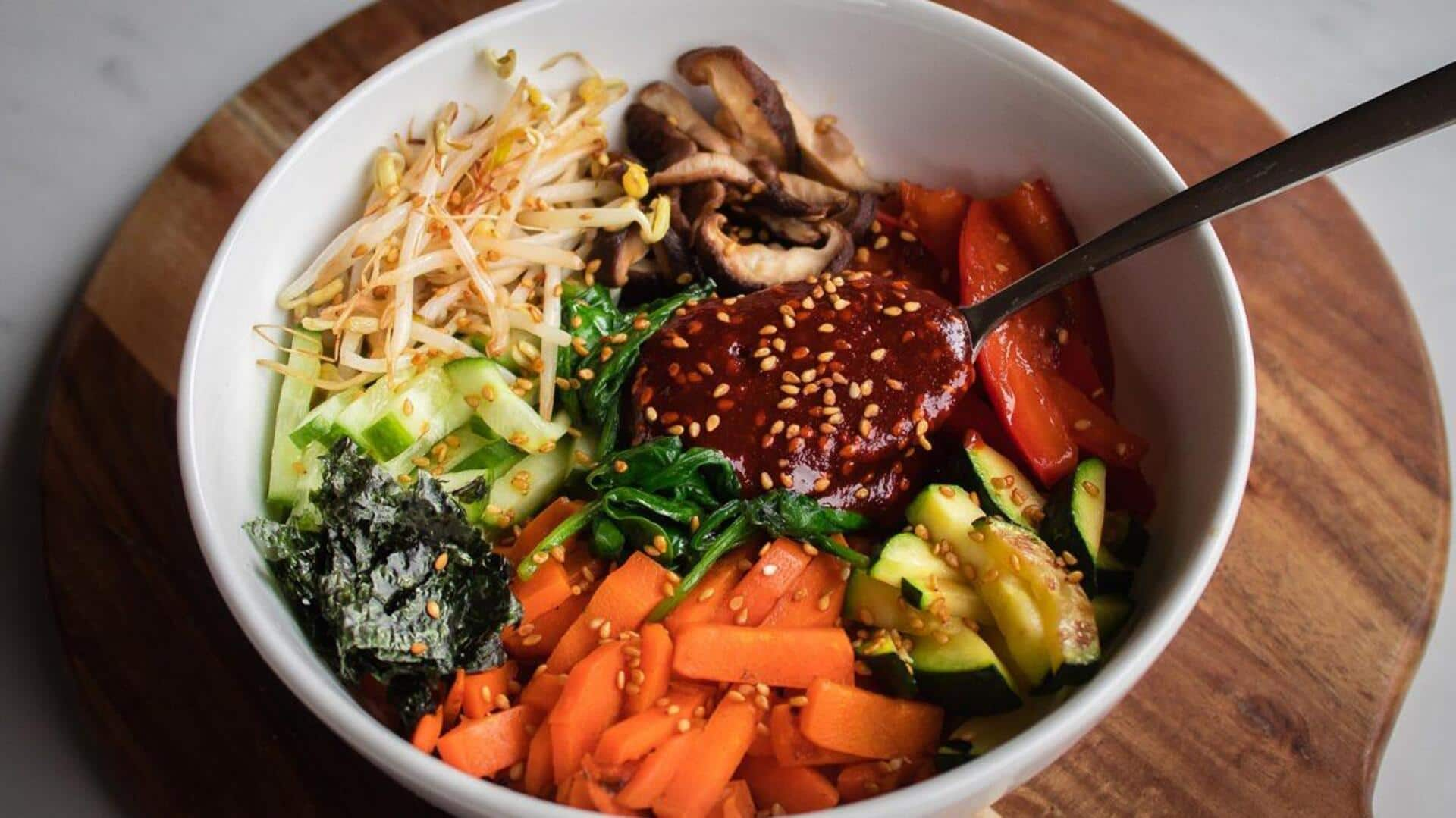
Make this scrumptious vegetarian Korean bibimbap at home
What's the story
Bibimbap, a traditional Korean dish, is celebrated for its vibrant colors and varied flavors. This guide presents a vegetarian version that remains true to the dish's flavorful profile. In Korea, bibimbap symbolizes harmony and balance, with each component carrying symbolic significance. Embrace this culinary journey as we explore how to create a delicious vegetarian bibimbap. Let's start cooking!
Ingredients list
Gather the following ingredients
For this vegetarian bibimbap, gather one cup cooked short-grain rice, a small zucchini thinly sliced, a carrot julienned, half a cup shiitake mushrooms, two cups spinach, two minced garlic cloves, four tablespoons soy sauce (divided), two tablespoons sesame oil (divided), salt to taste, one tablespoon gochujang (Korean chili paste), half a cucumber thinly sliced for garnish, and sesame seeds for garnish.
Step 1
Prepare the vegetables
Begin by heating a tablespoon of sesame oil in a pan over medium heat. Saute the zucchini and carrots with a pinch of salt until tender yet crisp, then set them aside. Using the same pan, possibly with additional sesame oil, cook the shiitake mushrooms with a tablespoon of soy sauce. Once done, add them to the other vegetables.
Step 2
Cook spinach & prepare sauce
In boiling water, blanch spinach for about 30 seconds until wilted but still bright green. Drain well, squeezing out excess water, then toss it in a bowl with minced garlic, one tablespoon soy sauce, and salt to taste. In another small bowl, mix gochujang with remaining soy sauce, adjusting according to your spice preference to create your bibimbap sauce.
Step 3
Assemble bibimbap
Scoop the cooked short-grain rice into a bowl, creating a substantial base. Carefully top the rice with the zucchini, julienned carrots, and shiitake mushrooms, either sectioned off or combined, according to your preference. To complete your dish, lavishly drizzle the gochujang sauce over the neatly arranged vegetables and rice, tailoring the amount to satisfy your taste for spice and flavor.
Step 4
Garnish and serve
To finish, adorn your vegetarian bibimbap with thin cucumber slices for a refreshing crunch. Generously sprinkle sesame seeds over the top, adding texture and a nutty flavor. This dish, bursting with the essence of Korean cuisine, is now complete and ready to delight your palate. It's best enjoyed immediately, so serve it fresh and savor the harmony of ingredients in your colorful creation.